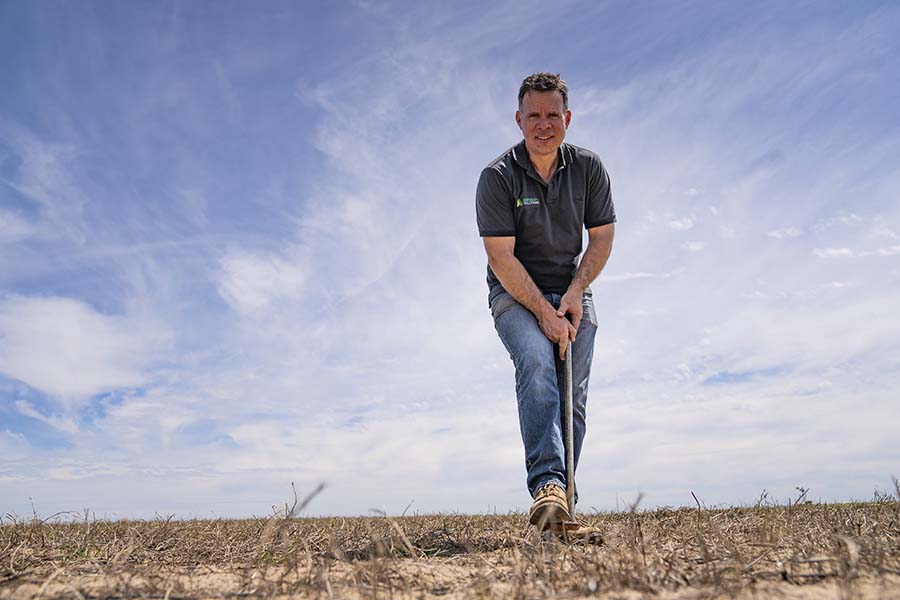With seeding ramping up across many parts of the southern region, growers are being reminded of the importance of monitoring and maintaining soil phosphorus levels in order to maximise yield and profit.
GRDC has several investments with a focus on phosphorus and soil testing, one of which is being led by Agronomy Solutions director Sean Mason.
Dr Mason said growers only have one opportunity to cost-effectively apply phosphorus for the current season – at seeding – so it was important to get it right.
“Poor early crop growth and vigour are key signs of phosphorus deficiency in cereals,” he said.
“Many growers in the southern region use a phosphorus replacement strategy based on the amount of phosphorus removed in the grain to determine the application rate, which is normally three kilograms of phosphorus for every tonne of grain removed.
“Some growers recognise the impact of their soil types on phosphorous tie-up so will add extra to the typical replacement rate.
“However, these strategies are effective on soils where phosphorus is not limiting growth, such as those with high background levels of soil phosphorus and a low phosphorus buffering index (PBI).”

Agronomy Solutions director Sean Mason says poor early crop growth and vigour are key signs of phosphorus deficiency in cereals. Photo: Agronomy Solutions
Dr Mason said variations in soil characteristics such as pH, texture, carbonate levels, aluminium and iron contents and PBI, can influence the amount of phosphorus available to a crop.
“In some instances, production could be improved by targeting phosphorus inputs in lower production zones as identified through soil characterisation,” he said.
“It is important to ground truth yield variability and constraints to production through soil testing and interpretation before moving to a phosphorus replacement program.”
As part of GRDC’s investment 'Using soil and plant testing data to better inform nutrient management and optimise fertiliser investments for grain growers in the southern region', Dr Mason has been researching the effectiveness of paddock zoning to target nutrient inputs.
He said considerable improvements can be made in productivity and gross margins by identifying soil zones prone to phosphorus deficiency and requiring higher fertiliser rates than recommended by replacement phosphorus calculators.
“The magnitude of improvement in productivity will be determined by the proportion of the paddock that expresses these soil characteristics,” Dr Mason said.
“In research funded by the South Australian Grain Industry Trust, identifying phosphorus responsive sites at Koolunga and Bute in SA and subsequently applying appropriate levels of phosphorus improved partial gross margins by $75 per hectare and $79 per hectare respectively.
“Through GRDC investment, similar paddock variation has been recorded through the northern Mallee in Victoria, parts of the Wimmera and on both Yorke and Eyre Peninsula.
“From 213 paddocks sampled in the southern region prior to the 2020 growing season, 51 per cent of paddocks reported lower soil test phosphorus and higher PBI values in the low production zone compared to high production zones, as outlined by in-season NDVI and grain yield maps.
“Overall, 36 per cent of paddocks had soil test values low enough to indicate that their yields would potentially improve from a boost in phosphorus input application within these zones.”

























































